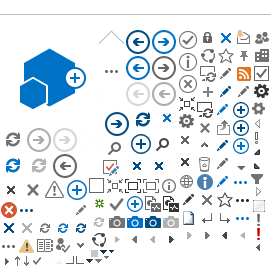
GERHARD VAN DEVENTER
Senior Fintech Analyst in the South African Reserve Bank’s Fintech Unit focussed on financial market innovation (including being the product owner for Project Khokha) and co-leading the IFWG’s Regulatory Sandbox.
|
HERCO STEYN
Senior Fintech Analyst in the South African Reserve Bank’s Fintech Unit where he focuses on crypto assets, stablecoins and emerging forms of private ‘money’.
|
From digitalisation to tokenisation
By Gerhard van Deventer and Herco Steyn | 28 July 2021
Introduction
The large-scale move towards digitalisation
[1] along with increased Internet connectivity and usage since the new millennium have resulted in various novel business models and applications. One of the prominent examples, over which much ink has been spilt, is distributed ledger technology (DLT)
[2], with the Bitcoin ledger being the best-known example. Initially DLT was described as a ‘hammer looking for a nail’, but we are increasingly noting entities like the Organisation for Economic Co-operation and Development (OECD) making statements that DLTs “are poised to become a transformative feature of financial markets, both in financial products and in the underlying market infrastructure itself” and that the tokenisation of assets is core to DLT’s disruptive potential (OECD, 2020: 3). It highlights that DLT’s disruptive potential impacts various areas in financial markets, including equity issuance, capital raising by smaller firms; post-trade processes; and clearing and settlement (OECD, 2020: 7).
Against this background, the South African Reserve Bank (SARB) launched Project Khokha in 2017 to consider the policy and regulatory implications of DLT, initially exploring wholesale payments
[3] on DLT (SARB, 2018). With the launch of Project Khokha 2 (PK2) the objective was to explore ‘tokenisation in financial markets
[4], but what does this actually mean? This blog will seek to explore this very question by investigating the different definitions of tokenisation and some practical examples of how it is being deployed in financial markets
[5] . This blog will be the first in a series exploring how disruption could occur through the growing trend of tokenisation, including stablecoins, and how it may impact financial services and its regulations, including a future crypto asset regulatory framework. The PK2 report, expected towards the end of 2021, will also provide further related insights gained during the project. An early practical example of tokenisation receiving substantial interest was during the 2017 crypto asset bull-run and associated Initial Coin Offering (ICO)[6] frenzy, which showed the potential for both the good and bad of tokenisation. Its application in financial markets, including the issuance of debt, equity and commodities on DLT, has become significantly more mainstream since then. A good example of the growing tokenisation trend is SIX Digital Exchange (SDX), which is working to build a regulated purely digital market infrastructure (OECD, 2021: 3). The use of ‘tokenisation in financial markets’ in the context of PK2 refers to this growing trend of issuing financial market instruments in token form (whether natively on DLT or through tokenisation), but let us look at some definitions next.
What is tokenisation?

The Asia Securities Industry & Financial Markets Association (ASIFMA) defines a token as “a digital representation of rights to any tangible (financial or otherwise) or intangible assets” (ASIFMA, 2019: 7), and makes the conceptual distinction between tokenised securities (through tokenisation of existing assets in a token ‘wrapper’) and security tokens (native tokens )
[7]. Although there is no standard definition of tokenisation, there seems to be broad conceptual alignment. The OECD views tokenisation as either the digital representation of real (physical) assets on DLT, or the issuance of traditional assets as DLT-based tokens (2020: 7, 11). According to the OECD tokenisation has “real world legal effects” and is not merely the recording of transactions in a different digital ledger. Embedding an asset’s inherent rights and economic value on DLT has cross-cutting financial market implications, for instance on custody services (OECD, 2021: 10-11).
The OECD further compares tokenisation of off-chain assets to the creation of asset backed securities (ABS) on DLT in order to create liquid assets from illiquid ones. This could be combined with fractionalisation
[8] to enable trade in secondary markets (OECD, 2020: 15). Harvey et al (2021: 69) define tokenisation as “the process of taking some asset or bundle of assets, either on or off chain” and either representing such an asset on-chain or creating a composite token (as a representation of its underlying tokens). Schär (2021) defines tokenisation as the process of “adding new assets” (aside from the native protocol asset) to a DLT, with the new asset being defined as a token. For Schär, the main motivation of tokenisation is the creation of stablecoins due to the volatility of protocol assets such as Bitcoin (BTC) and Ether (ETH).
In distinguishing between native tokens and assets subsequently tokenised on top of the original DLT, the OECD defines native tokens as “being built directly on-chain” existing exclusively on the DLT and views BTC, ETH and tokens created for ICOs as examples of native tokens, whose value is derived in and of themselves. Tokenisation in this context could be viewed in the context of, and the next step in, the dematerialisation of securities (OECD, 2020: 12-13). The definition of security tokens under emerging crypto asset regulation is particularly important due to its potential implications for financial markets. The Depository Trust and Clearing Corporation (DTCC), in the United States, defines security tokens as “tokenised representations of securities that are used to raise capital for various projects and initiatives”, while also noting the potential impact of DLT on trade and post-trade processing of such tokens (DTCC, 2019: 3). To this end, ASIFMA (2019: 7-8) stresses that a security token (i) is a native token, (ii) not existing outside of the DLT that hosts it, and (iii) although the token largely imitates existing securities features, the use of DLT enables efficiencies such as automated payment of bond coupons.
The IFWG, in its 2021 final position paper on crypto asset regulation in South Arica, accordingly considers three crypto asset tokens, namely: (i) exchange/payment tokens; (ii) security tokens and (iii) utility tokens. It defines security tokens as providing “rights such as ownership, the repayment of a specific sum of money, or entitlement to a share in future profits” and stresses that its characteristics are closely related to that of a security (IFWG, 2021: 15-16, 19). It is further important exactly how security tokens are treated under the Financial Markets Act, 2012 (Act No. 19 of 2012) (FMA), which clarity should be finalised as part of the current review of the FMA by National Treasury. Although not intended to be an overly technical blog, we simply note that currently most tokens are issued on the Ethereum blockchain. More specifically, non-unique and interchangeable tokens, such as tokens representing payment instruments, are issued under Ethereum’s ERC-20 fungible token standard, whereas non-fungible tokens (NFTs i.e. unique tokens e.g. representing ownership of artwork), are issued under the ERC-721 standard (Harvey et al, 2021: 69; Schär, 2021).
We therefore define tokenisation as (i) the digital representation of rights to an asset or group of assets, (ii) through the issuance of DLT-based tokens, either as native protocol assets or subsequently created through the use of smart contracts. The below table matches this definition to some of the use cases referenced above:
Table 1: Matching the definition of tokenisation to DLT use cases
DLT use case
|
Digital representation of rights
|
Issuance of DLT-based tokens
|
Tokenisation?
|
Transaction ledger
|
Purely using DLT to record transactions e.g. if a global firm uses DLT to record transactions between subsidiaries, it does not imbue the tokens with any rights.
|
A native protocol token would probably be used.
|
No
|
Stablecoins
|
The stablecoin would represent rights to an asset, which could be linked to the stablecoin itself or linked to assets held in custody.
|
Created through smart contracts e.g. utilising the ERC-20 standard.
|
Yes
|
Tokenised securities
|
The token is linked to an underlying asset or group of assets. Where a specific token is linked to a specific security, NFTs would be used to represent the embedding of specific rights.
[9]
|
Created through smart contracts.
|
Yes
|
Security tokens
|
The rights are directly embedded in the token itself.
|
Could be created as native protocol assets as well as through smart contracts.
|
Yes
|
The PK2 project is issuing a native debenture token, a stablecoin (with ongoing consideration of both tokenising on-chain and off-chain assets) as well as tokenised central bank money (i.e. central bank digital currency, or CBDC).
Some examples of tokenisation
Tokenisation may broadly be categorised as being either centralised (typically more public sector and regulated entities) or decentralised (often private sector innovators), with numerous permutations in between these two ends of the continuum. There are multiple examples of innovation occurring across decentralised finance (DeFi) and regulated markets.
Starting with DeFi MakerDAO‘s Multi-Collateral Dai system (Maker Protocol) is an example of on-chain tokenisation to create a stablecoin (Dai), soft-pegged to the US Dollar and built on Ethereum. MakerDAO is a decentralised autonomous organisation (DAO) managed by individuals who own its governance token (MKR). Any Ethereum-based asset approved by MKR-holders may be used as collateral (MakerDAO, 2020). The Wrapped Bitcoin (wBTC) application (also a DAO managed by a set of owners, but not through a governance token) tokenises BTC to enable its use on Ethereum-native DeFi platforms giving decentralised applications access to a larger capital pool (Harvey et al, 2021: 71-72). DeFi also includes the emergence of decentralised exchange (DEX) protocols enabling the decentralised trade in DLT-based token assets providing users more autonomy – although there are some trade-offs to consider with centralised exchanges. A DEX executes trades automatically utilising smart contracts
[10] in one atomic transaction eliminating credit risk and the smart contract may also provide other services such as custody. Early DEXs ran in isolation resulting in inefficiencies causing a move to open exchange protocols resulting in efficiencies, such as greater access to liquidity, stemming from a higher degree of integration. Examples of DEXs include Curve Finance, Uniswap, SushiSwap and Bancor
[11]. DEXs’ main mechanisms for creating liquidity are its order-matching approach and utilising an automated market maker (Harvey et al, 2021: 29). Aside from DEX protocols, DeFi also has peer-to-peer, or over-the-counter protocols, such as AirSwap which enables bilateral trading (Schär, 2021).
 Looking at more centralised examples of tokenisation, Project Helvetia during 2020 explored settling tokenised assets in central bank money. At the time of the project SDX aimed to launch on a DLT platform offering issuance, trading, settlement, management and custody of security tokens, with settlement in a privately issued digital coin. The project explored, using two proofs-of-concept, how both a wCBDC and the existing Swiss central bank payment system could be used to settle the purchase of a SDX issued security. The project highlighted different benefits and challenges, such as novel policy and governance questions surrounding the issuance of a wCBDC (BIS et al, 2020: 7). Some of the touted benefits and potential risks that current tokenisation initiatives seek to explore will briefly be listed next.
Looking at more centralised examples of tokenisation, Project Helvetia during 2020 explored settling tokenised assets in central bank money. At the time of the project SDX aimed to launch on a DLT platform offering issuance, trading, settlement, management and custody of security tokens, with settlement in a privately issued digital coin. The project explored, using two proofs-of-concept, how both a wCBDC and the existing Swiss central bank payment system could be used to settle the purchase of a SDX issued security. The project highlighted different benefits and challenges, such as novel policy and governance questions surrounding the issuance of a wCBDC (BIS et al, 2020: 7). Some of the touted benefits and potential risks that current tokenisation initiatives seek to explore will briefly be listed next.
Potential benefits and risks of tokenisation
Several tokenisation benefits have been put forward (ASIFMA, 2019: 10, 12; OECD, 2020: 7, 16-18), including:
speedy clearing and settlement (potentially through automation, disintermediation, and process efficiencies like parallel processing);
smart contracts enable automated compliance and business logic (including corporate actions);
expanded geographic reach and access to global markets; 24/7 trading, where it makes sense from an operational perspective;
transparency through a single source of truth and immutable asset register; and
further benefits such as cheaper fees through efficiencies; cyber security and resilience; more efficient secondary market operations; greater access to capital, including for small, medium and micro enterprises; increased liquidity of illiquid assets; and lower barriers to investment through fractionalisation.
Potential risks posited include:
retail investors may gain access to previously restricted asset classes and may not have the capacity to consider the implications of investing in high-risk products;
bifurcation of markets may occur should tokenised securities traded in secondary markets continue to be traded off-chain;
existing risks inherent in DLT, including scalability, governance and operational concerns;
regulatory arbitrage and gaps in regulation;
non-compliance with anti-money laundering and countering terrorist financing requirements;
concerns surrounding digital identity;
settlement finality may be uncertain in public permissionless DLTs
[12] (OECD, 2020: 17-18);
counterparty risk still remains pertinent, with principal risk (DTCC, 2019: 6) and issuer risk (Schär, 2021) being raised.
Conclusion
The risks and benefits of emerging innovation should be given an opportunity to bear out in reality in order for citizens to benefit from responsible innovation which address the four main public policy priorities as announced by National Treasury in 2011
[13] , namely: (i) financial stability; (ii) consumer protection and market conduct; (iii) expanding access through financial inclusion; and (iv) combating financial crime, which includes compliance with anti-money laundering and combating the financing of terrorism laws. The potential benefits enabled through tokenisation in financial markets, coupled with its potential harm, warrants careful further consideration. As part of the series of tokenisation blogs, we also intend to explore the business and regulatory implications of tokenisation in subsequent blogs. Readers may further look forward to the publication of the PK2 report which will share insights from the project on tokenisation in financial markets.
Bibliography
ASIFMA (2019) Tokenised Securities: A Roadmap for Market Participants and Regulators. Asia Securities Industry & Financial Markets Association (ASIFMA). Available from:
https://www.asifma.org/wp-content/uploads/2019/11/tokenised-securities-a-roadmap-for-market-participants-final.pdf [Accessed on 3 May 2021]
Bank for International Settlements (BIS), SIX Group AG and Swiss National Bank (2020) Project Helvetia. Bank for International Settlements. Available from:
https://www.bis.org/publ/othp35.htm [Accessed on 12 May 2021]
DTCC (2019) Guiding principles for the post-trade processing of tokenized securities. Depository Trust & Clearing Corporation. Available from:
https://www.dtcc.com/-/media/Files/Downloads/WhitePapers/Crypto-Asset-Whitepaper-2019.pdf [Accessed on 3 May 2021]
Harvey, CR, Ramachandran, A, & Santoro, J. (2021) DeFi and the future of finance. 05 April 2021 version. Available from:
https://ssrn.com/abstract=3711777 [Accessed on 3 May 2021]
IFWG (2021). IFWG CAR WG Position paper on crypto assets. Intergovernmental Fintech Working Group (IFWG). Available from:
https://www.ifwg.co.za//IFWG Documents/IFWG_CAR_WG-Position_Paper_on_Crypto_Assets.pdf [Accessed on 01 July 2021]
MakerDAO (2020) The Maker Protocol: MakerDAO’s Multi-Collateral Dai (MCD) System. MakerDAO. Available from:
https://makerdao.com/en/whitepaper [Accessed on 12 May 2021]
OECD (2020) The tokenisation of assets and potential implications for financial markets. Organisation for Economic Co-operation and Development (OECD) Blockchain Policy Series. Available from:
http://www.oecd.org/finance/The-Tokenisation-of-Assets-and-Potential-Implications-for-Financial-Markets.htm [Accessed on 4 May 2021]
OECD (2021) Regulatory approaches to the tokenisation of assets. Organisation for Economic Co-operation and Development (OECD) Blockchain Policy Series. Available from:
http://www.oecd.org/finance/Regulatory-Approaches-to-the-Tokenisation-of-Assets.htm [Accessed on 4 May 2021]
Schär, F. (2021) Decentralized Finance: On Blockchain- and Smart Contract-Based Financial Markets. Federal Reserve Bank of St. Louis – Economic Research. 5 February 2021. Available from:
https://research.stlouisfed.org/publications/review/2021/02/05/decentralized-finance-on-blockchain-and-smart-contract-based-financial-markets [Accessed on 3 May 2021]
SARB (2018) Project Khokha: Exploring distributed ledger technology for interbank payments settlement in South Africa. South African Reserve Bank (SARB). Available from:
https://www.ifwg.co.za/wp-content/uploads/2020/03/SARB_ProjectKhokha_20180605.pdf [Accessed on 25 May 2021]
...............................................................................................................................................................................................................................................................................................
SHARE THIS BLOG





 Disclaimer: As the IFWG we are enthusiastic to include diverse voices through our media content. The opinions of participants do not necessarily represent the views of the IFWG and their respective organisations.
Disclaimer: As the IFWG we are enthusiastic to include diverse voices through our media content. The opinions of participants do not necessarily represent the views of the IFWG and their respective organisations.
